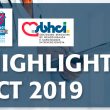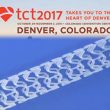Currently, the number of nonagenarian patients undergoing angioplasty (whether elective, urgent or emergency) has increased. This population is linked to more comorbidities and has barely been included in most randomized studies or registries. As such, we do not have robust evidence on this group. Researchers conducted an analysis of the J-PCI OUTCOME Registry, in which...
Using Biolimus-Coated Balloons for Treating Small-Vessel Disease Yields Promising Results
Drug-eluting balloons have demonstrated safety and effectiveness in the treatment of small-vessel coronary artery disease and in-stent restenosis. However, randomized studies were performed using paclitaxel. Several studies have shown that using biolimus, a semisynthetic analog of sirolimus, optimizes drug delivery in both stents and balloons. The aim of this randomized, multicenter study was to evaluate...
IVUS in Femoropopliteal PCI: Should We Start Using It?
For approximately two decades now, PCI has been the treatment of choice in femoropopliteal territory, and even though technological developments and increasing operator experience have indeed improved outcomes, IVUS (which has showed great benefits in PCI, even reducing left main mortality) is hardly used in this territory. This was a prospective randomized controlled study including...
Abbreviated DAPT in ACS: The End of Clopidogrel Monotherapy?
Compared with patients with chronic coronary syndromes, patients with acute coronary syndromes (ACS) are more likely to suffer from long term major adverse cardiac events (MACE). To prevent this, both the American and the European guidelines recommend prolonging dual antiplatelet therapy (DAPT) in this population for at least 12 months. However, in patients with certain clinical...
SOLACI-CACI 2021 Preliminary Agenda
Check out the main topics of the upcoming SOLACI-CACI 2021 Congress. Save the Date! Special Session About the COVID-19 Pandemic Managing Cardiovascular disease and Cath Lab during the COVID-19 Pandemic Live Case Transmissions Coronary and Structural cases performed by distinguished international and national operators. Coronary Track Myocardial Infarction, Left Main session, Complex...
TCT 2019 | TWILIGHT: Minimal DAPT in High Bleeding Risk Patients
Courtesy of the SBHCI. Monotherapy with a P2Y12 inhibitor after a minimum period (3 months) of dual antiplatelet antiaggregation (DAPT) is a valid treatment option to reduce bleeding in patients at high risk of bleeding complications. The present double-blind study presented at TCT 2019 simultaneously published in NEJM analyzed ticagrelor monotherapy (prior 3 months DAPT)...
The Most Read Articles of July in solaci website
1-Though Systolic BP Seems More Important, Diastolic BP Should Not Be Disregarded Systolic hypertension is more often associated to cardiovascular events. However, diastolic blood pressure should not be disregarded, since it can also predict even worse outcomes. Read more HERE 2-After Much Toing and Froing, Gastrointestinal Protection Is Back to the Forefront Several clinical guidelines...
ABSORB III: after 3 Years, the Bioresorbable Scaffold is Still a Disappointment
Courtesy of the SBHCI. The 3-year outcomes of the ABSORB III trial, which randomized 2008 patients 2:1 to an everolimus eluting bioresorbable scaffold (1322 patients) vs. a metallic stent with permanent everolimus eluting polymer (686 patients), was published with low profile and great disappointment. Primary end-point, a composite of target vessel failure, occurred in 13.4% of patients receiving...
Absorb IV: Bioresorbable Scaffolds with an Optimized Implantation Technique
Courtesy of the SBHCI. The Absorb IV trial randomized 2604 patients in a 1:1 ratio to receive an Absorb everolimus-eluting bioresorbable scaffold or a Xience stent. With the aim of minimizing the problems observed in previous studies, the Absorb IV protocol excluded small caliber (<2.5 mm) vessels and included mandatory aggressive pre-dilation followed by non-complacent balloon post-dilation. Patients could...
ABSORB II: No Benefits from Scaffolds After Complete Bioresorption
Courtesy of the SBHCI. The ABSORB II study sought to assess the mechanical properties of everolimus-eluting bioresorbable scaffolds, such as the increase in minimal lumen area and the recovery of the vasomotor properties of the treated artery. Last year saw the publishing of negative results for the primary endpoints, registering a higher rate of complications at...









